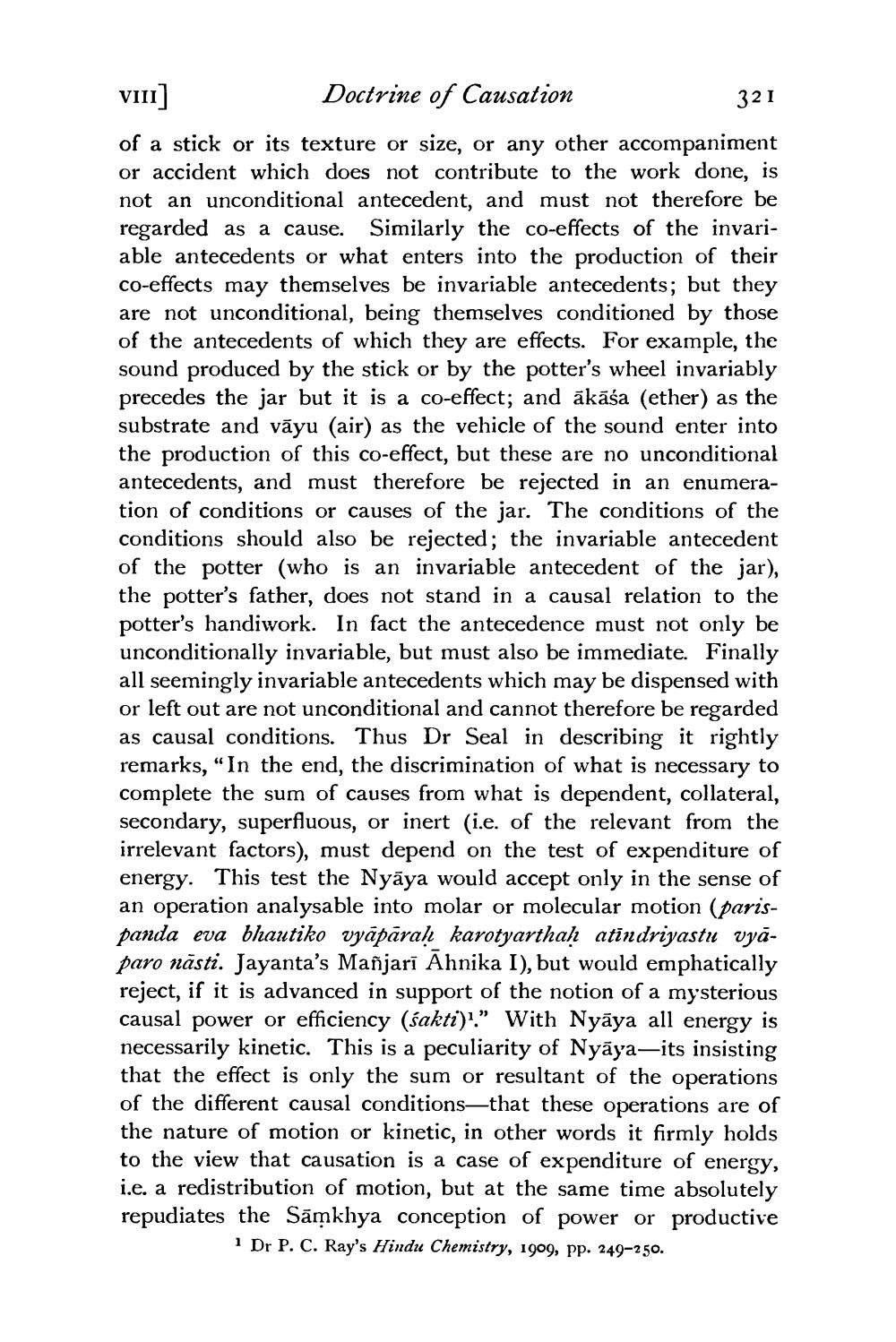________________
VIII]
Doctrine of Causation
of a stick or its texture or size, or any other accompaniment or accident which does not contribute to the work done, is not an unconditional antecedent, and must not therefore be regarded as a cause. Similarly the co-effects of the invariable antecedents or what enters into the production of their co-effects may themselves be invariable antecedents; but they are not unconditional, being themselves conditioned by those of the antecedents of which they are effects. For example, the sound produced by the stick or by the potter's wheel invariably precedes the jar but it is a co-effect; and ākāśa (ether) as the substrate and vayu (air) as the vehicle of the sound enter into the production of this co-effect, but these are no unconditional antecedents, and must therefore be rejected in an enumeration of conditions or causes of the jar. The conditions of the conditions should also be rejected; the invariable antecedent of the potter (who is an invariable antecedent of the jar), the potter's father, does not stand in a causal relation to the potter's handiwork. In fact the antecedence must not only be unconditionally invariable, but must also be immediate. Finally all seemingly invariable antecedents which may be dispensed with or left out are not unconditional and cannot therefore be regarded as causal conditions. Thus Dr Seal in describing it rightly remarks, "In the end, the discrimination of what is necessary to complete the sum of causes from what is dependent, collateral, secondary, superfluous, or inert (i.e. of the relevant from the irrelevant factors), must depend on the test of expenditure of energy. This test the Nyaya would accept only in the sense of an operation analysable into molar or molecular motion (parispanda eva bhautiko vyāpāraḥ karotyarthaḥ atīndriyastu vyaparo nāsti. Jayanta's Mañjarī Āhnika I), but would emphatically reject, if it is advanced in support of the notion of a mysterious causal power or efficiency (sakti)." With Nyaya all energy is necessarily kinetic. This is a peculiarity of Nyaya-its insisting that the effect is only the sum or resultant of the operations of the different causal conditions-that these operations are of the nature of motion or kinetic, in other words it firmly holds to the view that causation is a case of expenditure of energy, i.e. a redistribution of motion, but at the same time absolutely repudiates the Samkhya conception of power or productive 1 Dr P. C. Ray's Hindu Chemistry, 1909, pp. 249-250.
321




